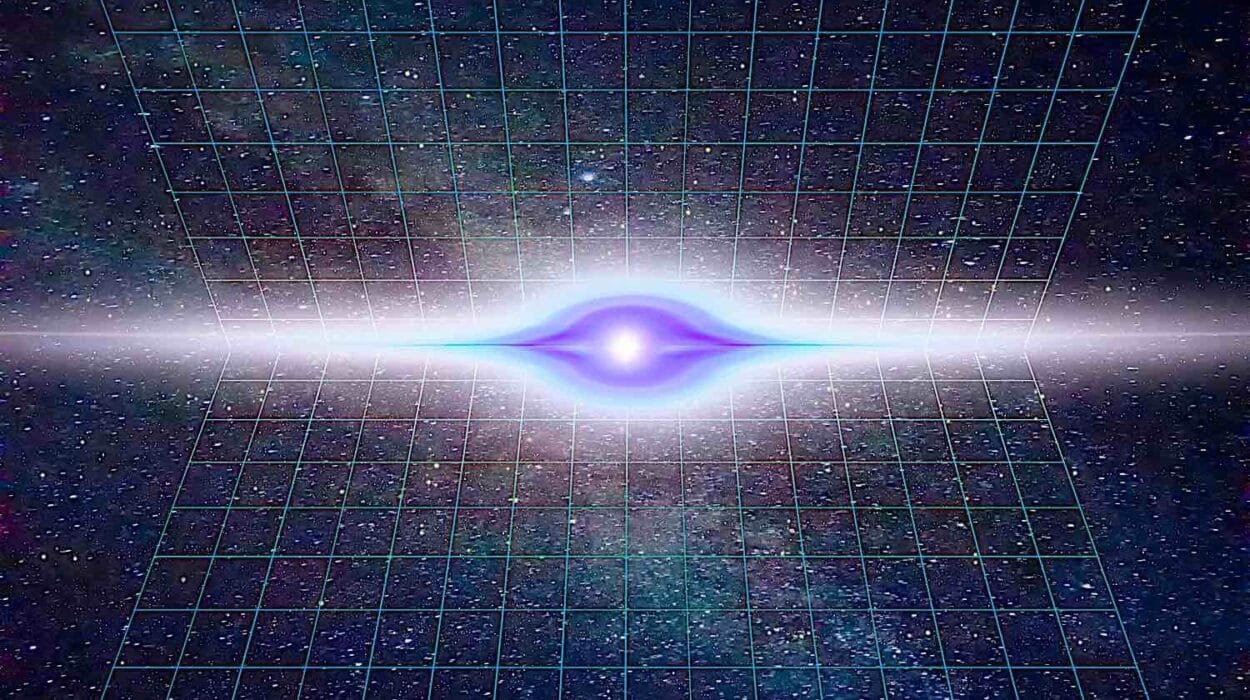Among the billions of celestial bodies that populate our galaxy, brown dwarfs occupy a fascinating middle ground—objects too massive to be planets, yet too small to ignite as stars. Sometimes referred to as “failed stars,” they blur the boundaries of astrophysical classification, challenging scientists to refine our understanding of how stars and planets form, evolve, and die. Brown dwarfs are neither fully stellar nor planetary in nature, yet they share properties with both categories, creating one of the most intriguing gray areas in modern astronomy.
To understand brown dwarfs, one must first understand the physics of what makes a star a star and why some cosmic objects fail to cross that crucial threshold. In exploring these mysterious substellar objects, we uncover not only how they form and shine but also how they contribute to the story of the universe itself.
The Stellar Definition: What Makes a Star
A star is born when gravity pulls together a dense cloud of gas and dust until it becomes hot enough to trigger nuclear fusion at its core. This process—primarily the fusion of hydrogen into helium—releases enormous amounts of energy in the form of light and heat. The outward pressure from this fusion balances the inward pull of gravity, creating a stable, self-sustaining object that can shine for billions of years.
However, there is a mass threshold for this process. If a protostellar cloud does not accumulate enough mass, the internal pressure and temperature will never become high enough to ignite hydrogen fusion. The object will still form, but it will never truly “turn on” as a star. Instead, it becomes something else—a brown dwarf.
The Birth of a Brown Dwarf
Brown dwarfs form in much the same way as stars. Within vast interstellar clouds, regions of higher density begin to collapse under gravity, accumulating material as they contract. In the early stages, these protostars radiate energy as they shrink, heating up their cores. But for hydrogen fusion to begin, the core temperature must reach around ten million kelvins.
If the forming object’s mass is below roughly 0.075 times that of the Sun (about 75 times the mass of Jupiter), the core temperature will never climb high enough for sustained hydrogen fusion. Instead, the collapse slows and stabilizes at lower temperatures. What remains is a dense, warm, dim object—a brown dwarf.
Despite failing to ignite hydrogen fusion, brown dwarfs do undergo brief nuclear processes in their youth. For a short period, those with sufficient mass can fuse deuterium (a heavier isotope of hydrogen) and, in some cases, lithium. But this fusion is fleeting and does not produce enough energy to sustain long-term luminosity. Once this fuel is exhausted, the brown dwarf gradually cools and fades over time.
The Mass Boundary Between Planets and Stars
The distinction between brown dwarfs and planets is subtle but significant. Astronomers define brown dwarfs as objects with masses between about 13 and 75 Jupiter masses. The lower limit corresponds to the minimum mass required for deuterium fusion, while the upper limit marks the threshold for sustained hydrogen fusion.
Below 13 Jupiter masses, an object is generally classified as a planet, regardless of where it forms. Above 75 Jupiter masses, it becomes a star. The gray area in between—occupied by brown dwarfs—represents the cosmic middle ground between planet formation and stellar ignition.
This boundary, however, is not purely about mass. Formation processes also matter. Planets typically form within the disks of gas and dust surrounding young stars, growing by accreting material. Brown dwarfs, on the other hand, form directly through gravitational collapse, like stars. Thus, a 15-Jupiter-mass object forming in isolation would be called a brown dwarf, while a 15-Jupiter-mass object forming around a star might still be classified as a giant planet.
The Physics Inside a Brown Dwarf
Although brown dwarfs do not sustain hydrogen fusion, they are far from inert. Their interiors are dominated by degenerate matter—gas compressed to such high densities that quantum mechanical effects determine its behavior. In particular, electron degeneracy pressure provides the key to understanding why brown dwarfs do not collapse further under their own gravity.
In ordinary stars, thermal pressure from fusion-generated heat supports the star against gravitational collapse. But in brown dwarfs, fusion does not occur. Instead, the electrons within the gas resist being squeezed into the same quantum states, providing a new form of pressure that counteracts gravity. This quantum pressure stabilizes the brown dwarf, allowing it to persist for billions of years even as it cools.
The temperature of a newly formed brown dwarf can be as high as several thousand kelvins. However, without ongoing fusion, it radiates its internal heat into space, cooling steadily over time. The older a brown dwarf becomes, the dimmer and cooler it gets, eventually becoming nearly invisible except in infrared light.
The Color and Light of Brown Dwarfs
Despite their name, brown dwarfs are not actually brown. In visible light, many appear reddish or even purplish, but most of their energy is emitted in the infrared spectrum. Astronomers use infrared telescopes to detect and study them because their faint glow at these wavelengths reveals details about their temperature, atmosphere, and composition.
The term “brown dwarf” was coined before their discovery, and it stuck even though “brown” is not an accurate description. The color of a brown dwarf depends on its temperature, which ranges from about 2,500 K for the warmest to below 500 K for the coldest. At higher temperatures, they emit visible red and infrared light, while cooler brown dwarfs radiate mostly in the mid-infrared, making them nearly invisible to the human eye.
Astronomers classify brown dwarfs based on their spectral characteristics into categories known as L, T, and Y dwarfs. L dwarfs are the warmest, showing metal oxide and hydride absorption features in their spectra. T dwarfs are cooler, dominated by methane absorption bands similar to those seen in giant planets like Jupiter. Y dwarfs are the coldest known class, with temperatures comparable to room temperature, emitting faint infrared light that challenges even the most sensitive instruments.
The Discovery of Brown Dwarfs
For much of the twentieth century, brown dwarfs were purely theoretical. Astronomers predicted their existence in the 1960s, but detecting such dim, cool objects was nearly impossible with the technology of the time. The first confirmed brown dwarf, named Gliese 229B, was discovered in 1995 orbiting a red dwarf star about 19 light-years away.
Gliese 229B was groundbreaking. It exhibited strong methane absorption in its spectrum, a signature that distinguished it from true stars and giant planets. Its discovery confirmed that substellar objects could exist in large numbers throughout the galaxy, shining faintly in the infrared while remaining hidden to optical telescopes.
Since then, thousands of brown dwarfs have been identified using infrared surveys such as 2MASS (Two Micron All Sky Survey), WISE (Wide-field Infrared Survey Explorer), and the UKIDSS (UK Infrared Deep Sky Survey). These missions revealed that brown dwarfs are common, perhaps nearly as numerous as stars, though their low brightness makes them difficult to detect beyond a few hundred light-years.
The Cooling and Aging of Brown Dwarfs
A key feature of brown dwarfs is that they cool continuously over time. Unlike stars, which maintain a steady luminosity for billions of years through nuclear fusion, brown dwarfs fade as they lose internal heat. This cooling follows a predictable pattern: as they age, their temperature, brightness, and spectral type change.
A young brown dwarf may begin its life glowing brightly in the infrared, with temperatures exceeding 2,000 K. Over the course of billions of years, it cools to below 500 K. The oldest brown dwarfs in our galaxy, likely formed soon after its birth, may now be so cold that they resemble large planets in appearance and temperature.
This gradual cooling provides a cosmic clock for astronomers. By comparing the temperature and luminosity of a brown dwarf to theoretical models, scientists can estimate its age. However, this process is complex because mass and age both affect luminosity, and without independent measurements of one, the other remains uncertain.
The Atmospheres of Brown Dwarfs
The atmospheres of brown dwarfs are among the most exotic in the cosmos. Their temperatures and pressures create conditions that allow unusual molecules and clouds to form. The warmest brown dwarfs have silicate and metal oxide clouds—essentially tiny mineral grains suspended in their atmospheres. As they cool, these clouds condense and sink, revealing methane and water vapor as dominant components.
Infrared spectroscopy allows astronomers to probe these atmospheres in detail. Observations show that brown dwarfs share many characteristics with gas giant planets, including dynamic weather patterns, storms, and even banded structures similar to Jupiter’s. Some brown dwarfs exhibit variability in brightness, likely caused by rotating cloud systems that move in and out of view.
The transition from L to T spectral types marks one of the most intriguing phases in brown dwarf evolution. During this stage, the thick dust clouds that once blanketed the object begin to dissipate, allowing deeper, cooler layers to become visible. This transformation results in rapid changes in color and brightness, making the L/T transition a key area of study for understanding atmospheric dynamics.
Brown Dwarfs as Planetary Analogs
Because of their similar sizes and atmospheric properties, brown dwarfs serve as excellent analogs for studying giant exoplanets. The same techniques used to analyze exoplanet atmospheres—such as transmission and emission spectroscopy—can be applied to brown dwarfs, often with greater precision since brown dwarfs do not have the overwhelming glare of a nearby star.
By observing brown dwarfs, scientists can test models of atmospheric chemistry, cloud formation, and thermal emission that also apply to planets like Jupiter, Saturn, and many hot Jupiters orbiting other stars. Some brown dwarfs even show temperature inversions and molecular absorption patterns that mirror those of known exoplanets.
Moreover, studying brown dwarfs helps refine our understanding of planetary formation itself. The overlap in mass and composition between brown dwarfs and massive exoplanets raises questions about where to draw the line between the two. Do all brown dwarfs form like stars, or can some form in planetary systems through disk fragmentation? These questions continue to fuel debate in astrophysics.
Binary Systems and Brown Dwarf Companions
Brown dwarfs rarely exist in isolation. Many are found as companions to stars or other brown dwarfs, forming binary or multiple systems. Observing these systems provides crucial insights into how brown dwarfs form and evolve.
In some cases, brown dwarfs orbit close to their host stars, much like giant exoplanets. In others, they exist in wide orbits, tens or hundreds of astronomical units away. Interestingly, the frequency of brown dwarf companions to Sun-like stars is relatively low compared to giant planets or stellar companions—a phenomenon known as the “brown dwarf desert.”
This scarcity suggests that brown dwarfs may form through mechanisms distinct from those that produce planets. While planets form through slow accretion within disks, brown dwarfs might originate from direct gravitational collapse, making them more akin to small stars. The discovery of brown dwarf binaries—pairs orbiting each other without a larger stellar companion—supports this star-like formation scenario.
Brown Dwarfs and Galactic Evolution
Brown dwarfs may play a larger role in galactic structure than their faint light suggests. Although each emits little radiation, their sheer numbers could contribute significantly to the overall mass of the Milky Way. Early theories even proposed that brown dwarfs might account for a portion of the galaxy’s “dark matter,” though subsequent observations have ruled out this possibility as the sole explanation for dark matter’s gravitational effects.
Nonetheless, brown dwarfs are essential components of the galactic population. They bridge the gap between the smallest stars and the largest planets, enriching our understanding of the mass distribution within star-forming regions. Studying their abundance and distribution helps astronomers model the initial mass function—the statistical distribution of masses at the birth of stars and substellar objects.
Furthermore, brown dwarfs serve as markers of galactic history. The oldest ones, now dim and cool, preserve clues about the early conditions of the Milky Way. By analyzing their chemical composition and motion, scientists can trace the evolution of star formation over billions of years.
The Coldest Brown Dwarfs: Approaching Planetary Temperatures
The discovery of Y dwarfs—the coldest known class of brown dwarfs—has expanded our understanding of how cool and dim these objects can become. Some Y dwarfs have surface temperatures below 300 K (about 27°C), comparable to the temperature of Earth’s surface. Despite being roughly the size of Jupiter, they are thousands of times less luminous than the Sun.
Detecting such cold objects requires infrared telescopes with extraordinary sensitivity. The WISE mission was instrumental in identifying many Y dwarfs, revealing a population of substellar objects so faint that they might lurk undetected even in the Sun’s neighborhood.
The coldest Y dwarfs blur the line between brown dwarfs and rogue planets—planet-sized bodies drifting freely through space without a parent star. It is likely that both populations coexist, and distinguishing between them depends on understanding their formation histories.
Rogue Brown Dwarfs: Drifters Between the Stars
Some brown dwarfs do not belong to any star system. These free-floating or “rogue” brown dwarfs roam the galaxy independently, having either formed in isolation or been ejected from their birth systems by gravitational interactions. They are essentially interstellar nomads, traveling through the cosmic void without a home star.
Detecting rogue brown dwarfs is challenging because of their faintness, but advances in infrared astronomy have revealed several relatively close to the Sun. Their discovery demonstrates that star formation processes can produce solitary substellar objects as readily as bound systems.
Rogue brown dwarfs also raise intriguing questions about the formation of free-floating planets. Some astronomers suggest that many of the rogue planets detected may actually be extremely low-mass brown dwarfs rather than true planets, further blurring the boundary between the two categories.
Brown Dwarfs and the Search for Life
While brown dwarfs themselves are unlikely to host life, they could still play a role in the broader search for habitable worlds. Some brown dwarfs have planetary companions, and although their faint light provides little warmth, tidal heating or residual formation energy could sustain subsurface oceans on moons orbiting those planets, similar to Europa or Enceladus in our own solar system.
Moreover, the study of brown dwarfs informs astrobiology by improving models of planetary atmospheres and chemistry. Understanding the spectral fingerprints of gases such as methane, ammonia, and water vapor in brown dwarf atmospheres helps refine techniques used to detect biosignatures on exoplanets.
In a broader sense, brown dwarfs illustrate the diversity of environments in which complex chemistry can occur. Even without fusion-driven warmth, their atmospheres host intricate chemical processes, possibly including organic molecule formation under certain conditions.
Observing and Measuring Brown Dwarfs
Modern astronomers use a range of techniques to study brown dwarfs. Infrared photometry reveals their temperature and luminosity, while spectroscopy provides detailed information about their atmospheric composition and surface gravity. Parallax measurements help determine distances, allowing researchers to calculate absolute brightness and compare observations with theoretical models.
Space-based telescopes such as Hubble, Spitzer, and JWST have revolutionized brown dwarf research. The James Webb Space Telescope, in particular, provides unprecedented sensitivity in the mid-infrared range, enabling scientists to detect cooler and fainter brown dwarfs than ever before. JWST observations have already begun to reveal detailed spectra of Y dwarfs, refining models of their temperature, chemistry, and cloud structure.
Ground-based observatories equipped with adaptive optics and wide-field infrared cameras also contribute significantly. Facilities like the Very Large Telescope (VLT) and Keck Observatory have captured direct images of brown dwarfs and measured their spectra with high precision. Together, these efforts are transforming brown dwarf science from discovery to detailed characterization.
Theoretical Challenges and Ongoing Questions
Despite decades of research, brown dwarfs remain enigmatic. One major challenge lies in accurately modeling their evolution. Because brown dwarfs cool and fade over time, their observable properties depend on both mass and age. Disentangling these factors requires independent age estimates, which are often unavailable unless the brown dwarf is part of a stellar system with known properties.
Another unresolved issue concerns their formation mechanisms. Do brown dwarfs form exactly like stars through direct gravitational collapse, or can some arise from disk instabilities around young stars, similar to giant planets? Observations of brown dwarfs in star-forming regions and their binary properties may eventually answer this question.
Finally, the lower mass limit for brown dwarfs remains debated. As we discover cooler and smaller objects, the distinction between the smallest brown dwarfs and the largest planets becomes increasingly blurred. Understanding this continuum is key to comprehending how nature constructs celestial bodies across the mass spectrum.
Brown Dwarfs and the Future of Astronomy
The study of brown dwarfs is entering a new era. As infrared and radio telescopes grow more sensitive, astronomers will detect even fainter and older examples, possibly uncovering relics from the earliest epochs of the Milky Way. Surveys with JWST, the Vera C. Rubin Observatory, and next-generation space missions will expand the census of nearby brown dwarfs, providing a more complete picture of our galactic neighborhood.
Beyond discovery, brown dwarfs serve as crucial laboratories for testing fundamental physics. Their dense interiors probe the behavior of matter under extreme pressures, bridging the gap between stellar and planetary physics. Observing how they cool and evolve over billions of years helps refine models of thermal emission, atmospheric circulation, and molecular chemistry—processes relevant to both stars and planets.
The quest to understand brown dwarfs also contributes to the search for other worlds. By studying these substellar bodies, scientists learn how to interpret the faint light of distant exoplanets, improving the chances of finding Earth-like worlds among the stars.
Conclusion
Brown dwarfs embody one of nature’s most intriguing compromises. They are the “almost stars”—objects that tried to ignite but fell short, destined instead to glow faintly for eons as they cool into obscurity. Yet in their failure lies success: brown dwarfs reveal the hidden complexity of the universe’s architecture, where the boundaries between stars and planets blur and new forms of matter emerge.
Though dim and elusive, brown dwarfs are cosmic storytellers. They whisper of the processes that build stars and planets, of the physics that governs heat, light, and gravity, and of the delicate balance between mass and energy that defines our cosmos. In studying them, astronomers glimpse the continuum of celestial creation—a spectrum of existence where even the faintest glow holds the secrets of the stars.
As our instruments grow ever more powerful and our curiosity sharper, brown dwarfs will continue to illuminate the borderlands of the stellar frontier. They remind us that the universe is not composed of neat categories, but of gradations, transitions, and endless variety. The stars that aren’t quite stars stand as quiet witnesses to the creativity of cosmic evolution, bridging the gap between brilliance and darkness in the grand design of the universe.






